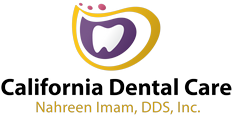Just thinking about going through a tooth extraction can be a stressful experience. If this is your first time having dental issues, then this can be especially true. First and foremost, discuss your questions and concerns with your dentist or your oral surgeon before the procedure. You will proceed more confidently if you understand what to expect and learn more about the treatment.
Why Patients Might Need a Tooth Extraction
Sometimes decayed and damaged teeth might be repaired with fillings and crowns. However, tooth extraction may be necessary if the tooth is too damaged. It will ensure further complications are avoided, and it will help ease discomfort.
Here are some of the dental issues that could call for an extraction:
- Tooth decay that affected the inner layers
- Dental injuries and traumas
- Baby teeth that block the growth of permanent teeth.
- Not enough space to move the teeth into position for orthodontic treatment.
Preparing for Tooth Extraction
Reviewing your dental and medical history is the first step your dentist or oral surgeon will take before performing a tooth extraction. You will probably have to do dental x-rays. The x-rays will show your tooth’s position, length, and shape, and your dentist or oral surgeon will know the best way to remove the tooth. The information will ensure the discomfort is minimized and other teeth are not affected. Your dental team will also numb the area before treatment with a local anesthetic.

The Process of Tooth Extraction
So the first step is to prepare you for the procedure. After that, your dentist or oral surgeon will use a special tool known as an elevator to loosen the tooth. The tooth is removed with dental forceps once it is loose enough. Sometimes the tooth may be impacted, which means it has not fully emerged. In this case, the bone or gum tissue obscuring the tooth has to be removed first. Your dentist or oral surgeon will use a gentle rocking motion in order to loosen the tooth so that it can be extracted carefully.
Your dentist or oral surgeon will place gauze over the socket to keep it from bleeding after the tooth is removed. To allow clotting, it is recommended to bite down on the gauze for 30-45 minutes after the procedure. In many cases, a few self-dissolving stitches are placed on the extraction site to close the gum edges.
After the Tooth Extraction
After the procedure, it is essential to keep the extraction site clean to prevent infections. Gently rinsing your mouth with salt water is recommended to clean and soothe the extraction site.
Hot liquids like hot tea or coffee should be avoided in the first 24 hours after the procedure. It is also recommended to limit vigorous exercises and any kind of strenuous activity. For patients who smoke, it is important not to do so for at least 24 hours after tooth extraction. It is not uncommon to feel some pain around the extraction site. Most likely, your dental team will prescribe pain relief medications that can help alleviate the discomfort.
Tooth extraction is an effective dental procedure. It is very common and safe, but it is essential to follow your dentist’s instructions. Following the before and after treatment procedures will make sure you avoid complications. And remember, you can always talk to one of our dentists at California Dental Care if you have questions, concerns, or need a second opinion. Your doctor will provide a detailed explanation and help ease your anxieties before moving forward with treatment. Give us a call at (707) 553-8008 or click here to schedule an appointment today!


